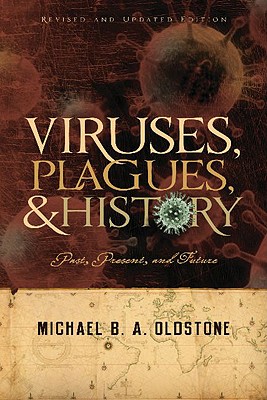
Viruses, Plagues, and History:Past, Present and Future
Book Summary
Although viral outbreaks have been around for centuries, we still know so little about these giant killers. As people continue to reach the far corners of the world and are increasingly encroaching on more and more wildlife habitats, viral plagues are only going to intensify and become deadlier.
In his book Viruses, Plagues, and History: Past, Present and Future, Michael B.A. Oldstone, MD, Professor Emeritus and head of the Viral Immunology Laboratory at the Scripps Research Institute, offers a lucid explanation of how viral diseases managed to deplete native populations on different continents, causing dramatic geographic, economic, and religious changes.
Smallpox, polio, measles, yellow fever, HIV AIDS, SARS, West Nile virus, mad cow disease are just a few of the deadly diseases that humanity has had to face with in the past five centuries, but this list is certainly going to grow.
Even a century later, we still do not know why the lethal Spanish flu managed to kill more than 50 million people around the world. Advances in detective virology, therapeutics and our understanding of the basic functions of the immune system may have helped in dealing with several epidemics, yet the risks of the next viral pandemic or bioterrorist attack are always clear and present.
The sobering legacy of the number of infections and lives claimed by deadly viruses worldwide: smallpox – 300 million; HIV – 39 million infected, 17 million deaths; measles – 130 million infected, 8 million deaths.
